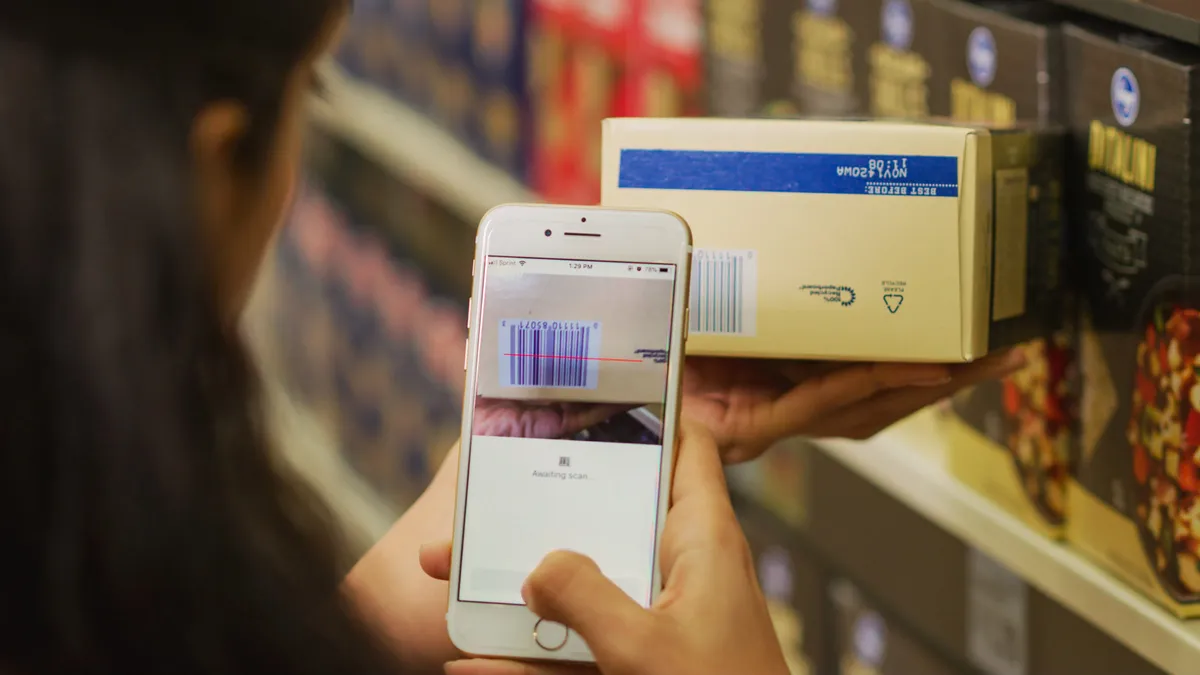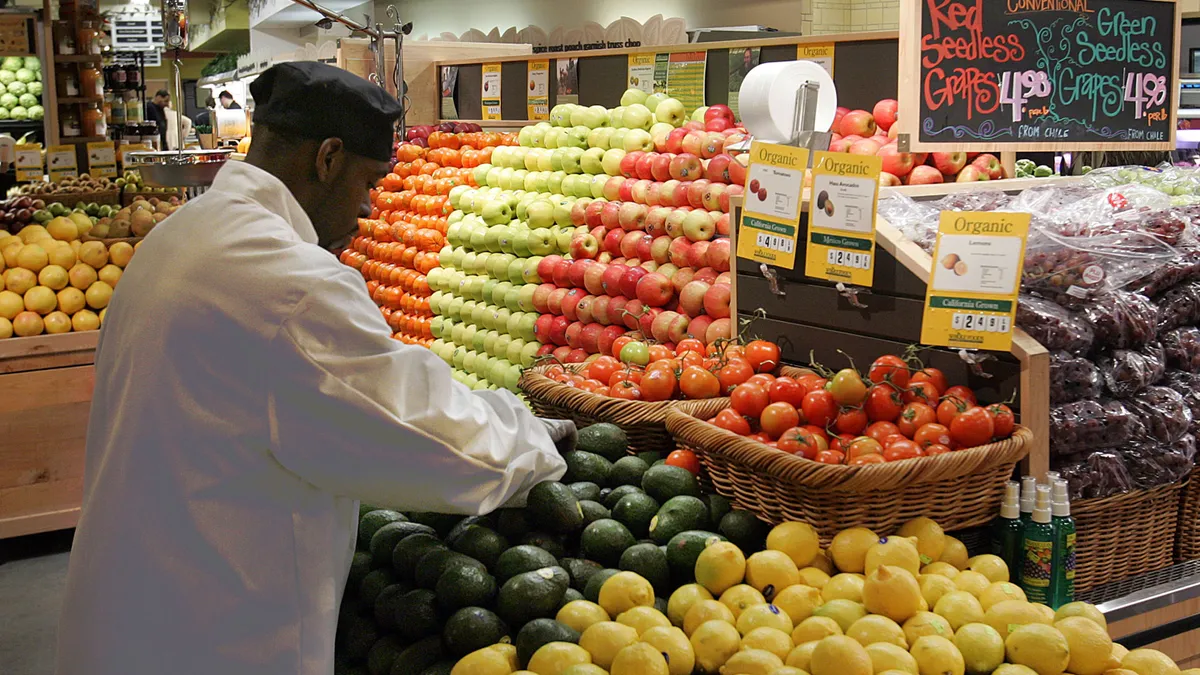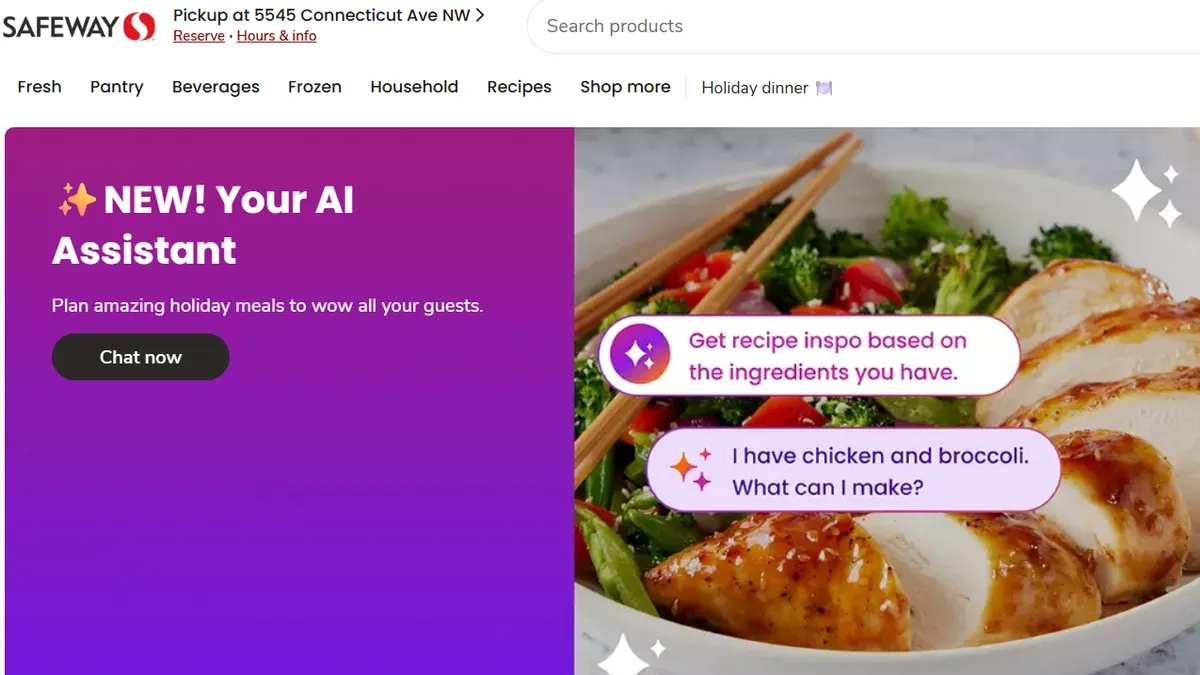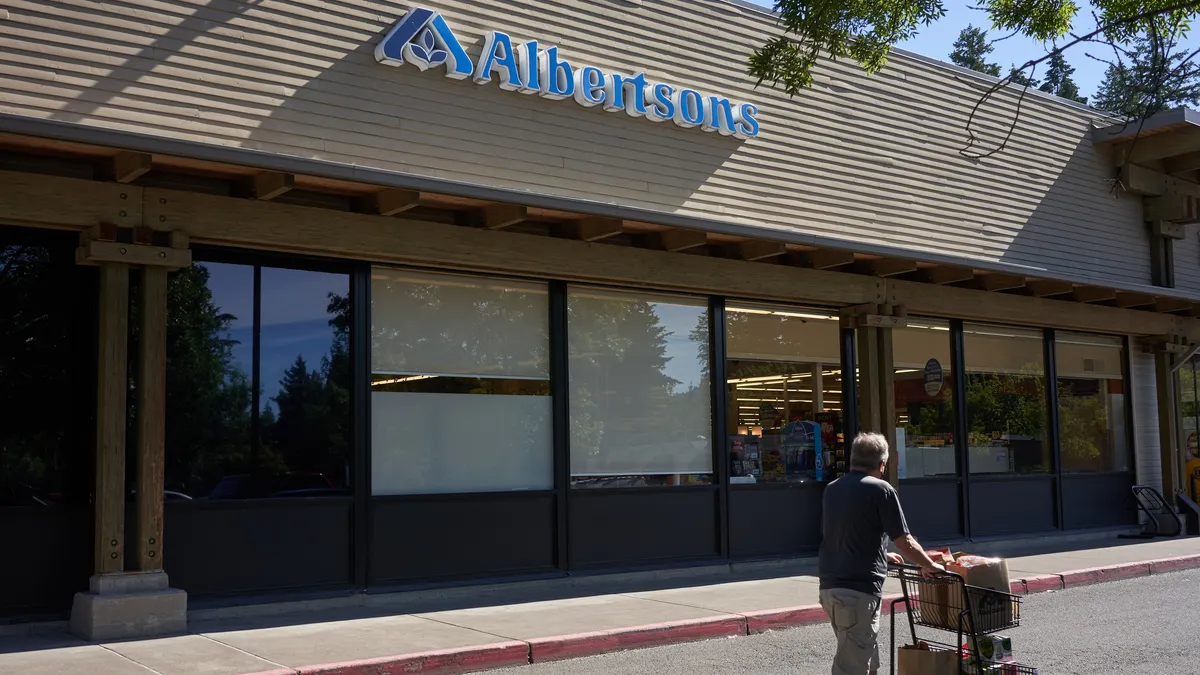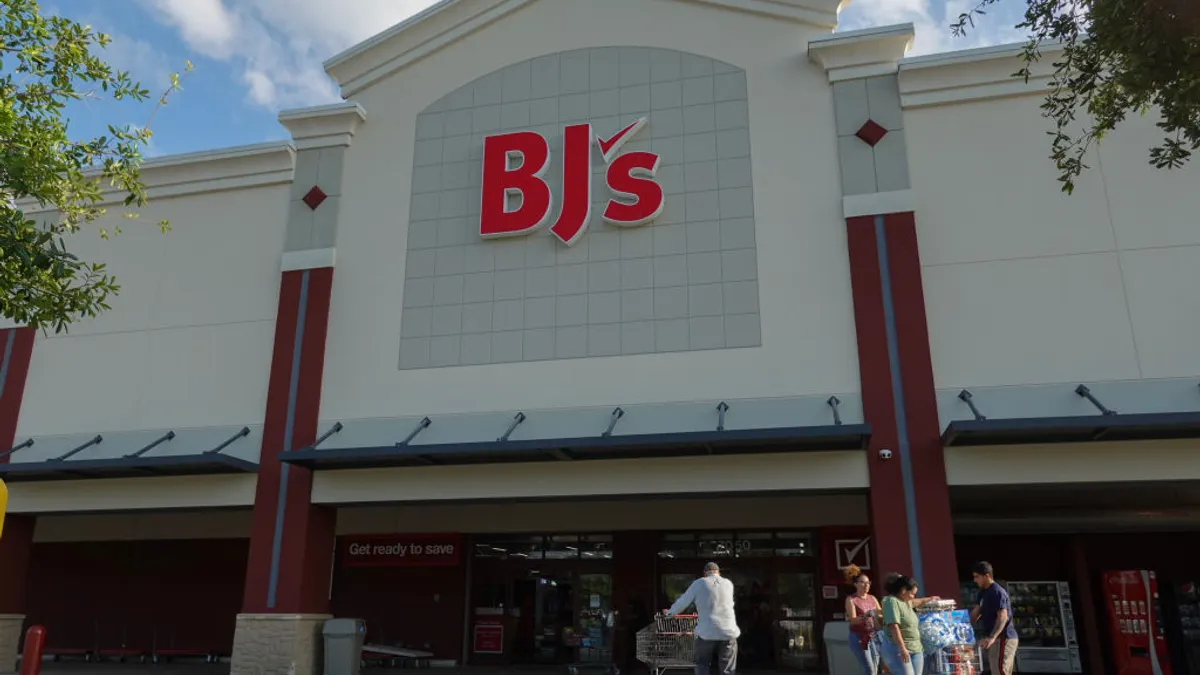Pardon the Disruption is a column from Grocery Dive that looks at the forces shaping food retail.
Kroger has launched a lot of new initiatives since it kicked off its Restock push, but the company's connected-store pilot with Microsoft, announced earlier this week, feels particularly core to that mission and to the company's future.
As shoppers migrate online and utilize their phones more to shop, and as competitors Amazon and Walmart pour money into digital innovations, Kroger aims to bring its stores into the modern age. It wants to utilize technology to make shopping in-person to be as efficient, convenient and intuitive as online shopping at its best can be — without losing the familiar feel and sensory appeal that continues to draw consumers to grocery stores.
On the operations end, meanwhile, Kroger wants to make its stores run as efficiently as possible, and to make a mint selling all that gleaming new technology to other companies.
I had a chance this week to tour one of Kroger's new connected stores — a QFC located near Microsoft's headquarters in Redmond, Washington. (The other location is in Monroe, Ohio, near Kroger's headquarters). The store features all of Kroger's latest store innovations, including the Scan, Bag, Go checkout tool; digital EDGE shelf units in the center store aisles; an optimized assortment and remote temperature controls. The grocer has been slowly rolling out these updates to stores across the country.
The newest tool on display was a "guided shopping" feature that turns a typical trip into a digitally enhanced treasure hunt. Here's how it works: You log in to the Scan, Bag, Go app or one of the store's handheld scanners, then answer "yes" when asked if you want to shop using the guided function. The tool assigns one of 16 food emoji icons to your shopping list, then identifies the aisle and region where you can find each product. Walk into aisle 8, for instance, and you'll see tags like R1, R3 and R5 and L1, L3 and L5 — indicating the right and left side of the aisle — running from one end to the other. When you wander near the latest item on your list, your unique food emoji lights up on the shelf beneath the product.
When QFC's corporate affairs and internal communications manager Zach Stratton sought a can of Del Monte corn, for instance, a banana icon popped up on the shelf. After he scanned the bar code using his phone, the light went off and it was on to the next item.
"If I'm shopping at the same time someone else is and we're both looking for corn, we would show up as different icons on the shelf," he told me.
Kroger claims the new tool cuts shopping time in half — a win for time-pressed shoppers and those unfamiliar with a store's layout. The tool also serves some key operational functions. Shoppers can identify when an item is out of stock, which sends a notification to the store team. Employees also use the program to fill click-and-collect orders in half the time, shrinking pickup windows for the company's fast-expanding ClickList program.
"If we said an order could be ready in four hours, it can now be ready in two because we can get in and out much quicker filling orders," said Stratton.
But wait, there's more in this store. Digital endcaps equipped with sensors run advertisements that coincide with products on display and can vary from customer to customer. The endcaps, which Kroger is also piloting closer to its headquarters, and includes Pepsi, Proctor & Gamble and Kraft-Heinz as initial partners, tie in with shoppers' loyalty signature through their phones or Scan, Bag, Go handhelds and can measure how long they stood in front of the ad and whether or not they bought a product.
This sort of detailed engagement data — the type of data comprehensively mined online but not so easily measured in stores — could be a merchandising asset for Kroger and help boost trade spending. Indeed, the grocer hopes to harness its digital shelves and sensors to provide customized ads that resonate with shoppers. One of the endcap ads at the Redmond QFC is a Chex Mix spot that features the Grinch — a tie-in clearly aimed at younger shoppers. As Kroger continues to crunch customers' data, it wants to figure out what brands and categories to highlight, and which ones not to highlight. Offering a hypothetical, Stratton said the stores could identify vegans and vegetarians and know not to advertise meat products to them.
Along with all the data Kroger is able to collect, its digital units cut down on labor hours with instantaneous price updates. According to a recent post by Microsoft, EDGE shelves can also reduce stores' energy consumption by allowing them to turn down lighting. The shelves run at a low voltage, and Kroger aims to eventually power them fully through renewable sources of energy.
There are some key questions surrounding Kroger's digital push. Will the company be able to squeeze even more trade dollars out of strapped CPG companies? More importantly, what's the value for consumers? The guided shopping feature is nifty, but it also seems like something a shopper would try once and then never again. Regular shoppers will know where to find products inside stores. In addition, the tool requires shoppers to use the Scan, Bag, Go app or handheld scanner. Stratton pointed out that shoppers can just use the guided shopping navigation tool by removing items from their SBG cart as they go along, but this may be prove tedious for customers.
Shoppers may also have privacy concerns. They're used to seeing digital ads on their phones and computers, but getting a personalized ad beamed to them in a shared space could feel more intrusive than helpful to some.
On the plus side, the EDGE shelves have an undeniable air of cool about them. They can also update quickly with sales promotions and list product attributes that are important to shoppers, like local and gluten-free. It's worth noting, too, that guided shopping and other programs are still a work in progress for Kroger. As it tests new technology, the grocer will figure out what's working and what isn't and make adjustments. The Redmond QFC, for instance, will eventually add digital shelves to its dairy and produce departments, opening up a new class of products to tinker with and monitor.
This test-and-learn phase is incredibly important for Kroger and for other grocers bringing new technology into their stores. Industry disruption has pushed retailers to explore dazzling new enhancements to their backrooms and their selling floors, and vendors are welcoming them with open arms. But grocers have to make sure new technology is relevant. Although innovations like those Kroger is rolling out can connect shelves to phones and aisle sensors to far-away data centers, the most important connection is to the shopper.


